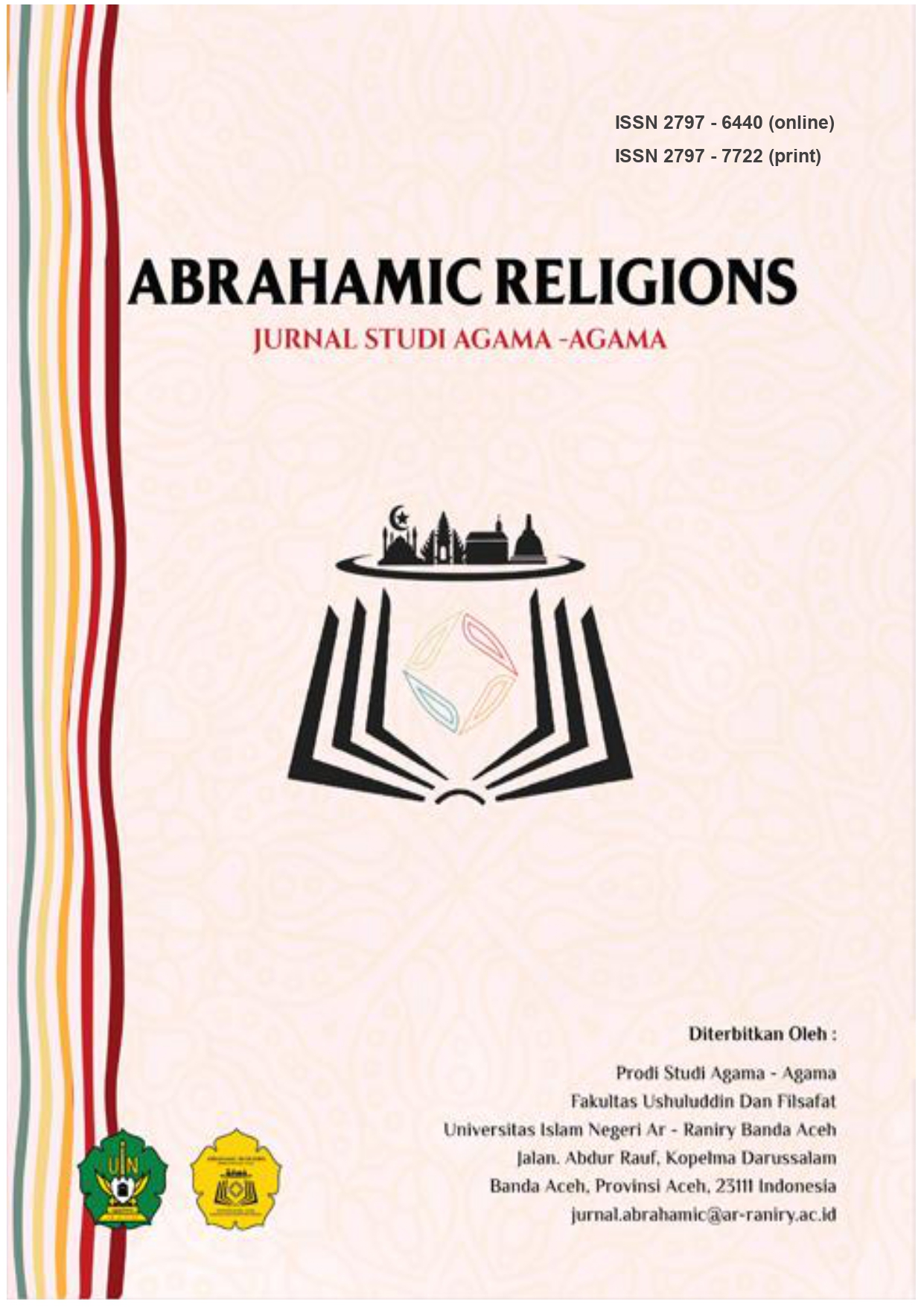KONSEP SIMBOL KEBUDAYAAN: SEJARAH MANUSIA BERAGAMA DAN BERBUDAYA
DOI:
https://doi.org/10.22373/arj.v2i1.12070Keywords:
Symbol, CultureAbstract
Humans as God's most perfect creatures create their own culture and preserve it from generation to generation. Culture is part of the journey of human life. Based on history, culture or culture is something that cannot be separated from human life. Culture is the result of human creativity. Culture exists because of humans and humans develop a variety of cultures according to their needs and desires. Culture develops according to the human environment. Apart from being social creatures, humans also interact with fellow humans according to their habits and habits which in the end become a culture that is always carried out. Culture is a product of human creation. In other words, culture exists because humans created it and humans can live in the midst of the culture they created. Culture will continue to live when humans become residents and culture has enormous uses for all aspects of human life. Culture, which is a universal phenomenon, where every human being in the world has a culture, even though the shape (symbol) and style, of the culture that is owned varies from various tribes, nations, and races. In the end, the culture that humans have shows their similarities in accordance with human nature and every culture has a place and society is a place for that culture.
References
Agus, Bustanuddin, Agama Dalam Kehidupan Manusia, Pengantar Antropologi Agama, cet I, (Jakarta: Grafindo Persada, 2007).
Herusatoto, Budiono, Simbolisme Jawa, cet. I, (Yogyakarta:Ombak, 2008).
Koentjaraningrat, Sejarah Teori Antropologi, (Jakarta: UI Press, 1987).
Mahdayeni et all, Manusia Dan Kebudayaan (Manusia Dan Sejarah Kebudayaan, Manusia Dalam Keanekaragaman Budaya Dan Peradaban, Manusia Dan Sumber Penghidupan), dalam TADBIR : Jurnal Manajemen Pendidikan Islam, Vol. 7, No. 2 Agustus 2019.
Maran Rafael Raga, Manusia Dan Kebudayaan Dalam Perspektif Ilmu Budaya Dasar, (Jakarta: Rineka Cipta, 2007)
Poespowardojo, Soerjanto, Filsafat tentang Manusia, cet. I, (Jakarta:Gramedia, 1977).
Purwadi, Penghayatan Keagamaan Orang Jawa, cet. I, (Yogyakarta:Media Presindo, 2002).
Pusat Bahasa Departemen Pendidikan Nasional, Kamus Besar Bahasa Indonesia, cet II, (Jakarta: Balai Pustaka, 2007).
The Liang Gie, Suatu Konsepsi Ke Arah Penerbitan Bidang Filsafat, (Yogyakarta: Karya Kencana, 1997).
Togardo Siburian, Menuju Kesetaraan Dalam Beragama Yang Berbudaya: Refleksi Seminarian Injili, dalam SOCIETAS DEI, Vol. 3, No. 2 Oktober 2016.
Zaini, Syahmin, Mengapa Manusia Harus Beragama, cet I, (Jakarta: Kalam Mulia, 1986).
Jacobus Ranjabar. (2006). Sistem Sosial Budaya Indonesia Suatu Pengantar. Ghalia Indonesia.
Khairil Fazal, M. (2021). Hubungan Simbiosis Masyarakat Aceh Besar Dengan Tradisi Hindu. Abrahamic Religions: Jurnal Studi Agama-Agama, 1. https://jurnal.ar-raniry.ac.id/index.php/abrahamic
Laode Monto Bauto. (2014). Perspektif Agama dan Kebudayaan Dalam Kehidupan Masyarakat Indonesia: Suatu Tinjauan Sosiologi Agama. JPIS, Jurnal Pendidikan Ilmu Sosial, Volume 23,.
Muhammad. (2020). Hubungan Agama dan Budaya Pada Masyarakat Gampong Kereumbok Kabupaten Pidie, Provinsi Aceh. Substantia: Jurnal Ilmu-Ilmu Ushuluddin, Volume 22.
Sahar Santri. (2015). Pengantar Antropologi: Integrasi Ilmu Dan Agama (1 (ed.)). cara baca.
Downloads
Published
Issue
Section
License
Authors who publish in this Journal agree to the following terms:
- Authors retain copyright and grant the journal right of first publication with the work simultaneously licensed under Attribution-ShareAlike 4.0 International (CC BY-SA 4.0) allows others to share the work with an acknowledgment of the work's authorship and initial publication in this journal.
- Authors are able to enter into separate, additional contractual arrangements for the non-exclusive distribution of the journal's published version of the work (e.g., post it to an institutional repository or publish it in a book), with an acknowledgment of its initial publication in this journal.
- Authors are permitted and encouraged to post their work online (e.g., in institutional repositories or on their website) prior to and during the submission process, as it can lead to productive exchanges, as well as earlier and greater citation of published work. (See The Effect of Open Acces)












